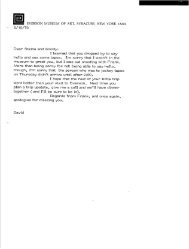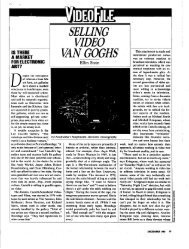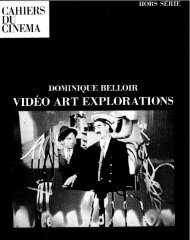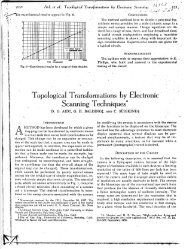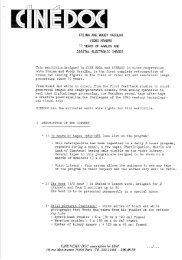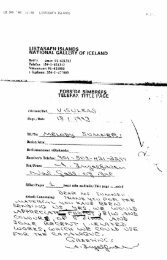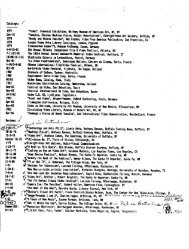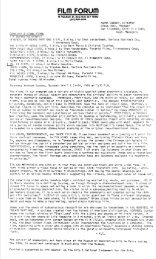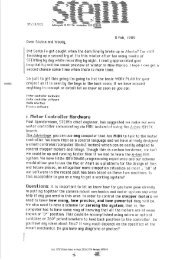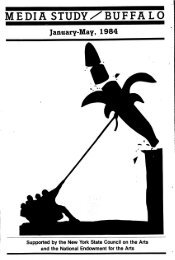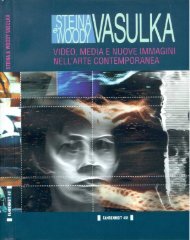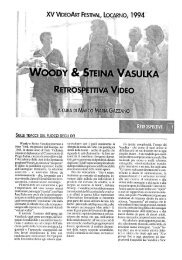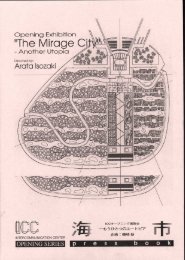Chapter 4: A HISTORY OF COMPUTER ANIMATION ... - Vasulka.org
Chapter 4: A HISTORY OF COMPUTER ANIMATION ... - Vasulka.org
Chapter 4: A HISTORY OF COMPUTER ANIMATION ... - Vasulka.org
Create successful ePaper yourself
Turn your PDF publications into a flip-book with our unique Google optimized e-Paper software.
<strong>Chapter</strong> 4 : A <strong>HISTORY</strong> <strong>OF</strong> <strong>COMPUTER</strong> <strong>ANIMATION</strong> 3/20/92 40<br />
identically, written out in lower resolution, blockpix style (fig . 70),<br />
and used as maps (once they got invented) .<br />
The First Animation Languages<br />
Subroutine Packages<br />
During the 1960's specialized languages for computer<br />
animation were also developed . Software began to get understood<br />
toward the end of the 1950s ; the first operating systems,<br />
assemblers, and languages were all invented during this period . The<br />
first widely distributed graphics software package was a<br />
standardized subroutine interface defined by Calcomp (1959)(fig . ) ; a<br />
similar package by North American Rockwell Corporation was<br />
developed to support the SD-4020 and helped accelerate progress<br />
during the latter 1960s . The first animations were programmed in<br />
languages like Fortran, the first animation languages were Knowlton'<br />
BEFLIX (1964) and Anderson's CALD (196_) .<br />
2D and 3D drawing languages<br />
The pioneers also simulated the process of animation . In fact,<br />
it was one of their very first tasks . Animation strikes to the heart<br />
of computer graphics because it allows the researcher or artist to<br />
use the temporal axis to explore variance . But simulation of the<br />
animation process goes beyond making variance inside of do-loops<br />
and plotting frames of the result . Simulation of animation implies<br />
the computerization of ways to <strong>org</strong>anize and manipulate type,<br />
graphical objects sets, cameras, animation stands, and cameras, and<br />
backgrounds . Tacit here is an understanding of sculpting temporal<br />
events ; this distinguishes animation from static graphic software ;<br />
70 . The blockpix technique evolved from the work of several<br />
people, and it is symbolic of the new breed of "digital effects" that<br />
emerged around 1976 . Leon Harman earlier at Bell researched<br />
recognizable digital resolutions, but never made animation . Ed<br />
Manning performed the effect using an analog optical device in an<br />
optical printer . At III, Whitney and Demos did the effect in full<br />
color also, only digitally . They first struck pan masters from the<br />
OCN, digitied them on the flying spot scanner/COM, averaged the<br />
pixels in each square of the output, and wrote out new color optical<br />
negatives on the scanner/COM . The effect instantly became a<br />
metaphor for the computer's point of view . After frame buffers<br />
were invented it could also be done in video .



